Agri-Business Multi-Criterion Decision Analysis
Several companies interested in investing in large agri-business processing facilities posed a potential challenge in their need to utilize as much as 600,000 gallons of water per day for their operations. Fearing a potential missed economic development opportunity, the Saskatoon Regional Economic Development Authority (SREDA) sought a coordinated strategy to enable an adequate water supply. V3 and SREDA formed the Water Supply Working Group to better understand the opportunities, constraints, and options related to developing local water supply capacity. We conducted a forum attended by industry and governmental agency representatives, resulting in a strategy to effectively respond to value-added agri-businesses’ inquiries regarding opportunities and infrastructure availability in the Saskatoon Region.
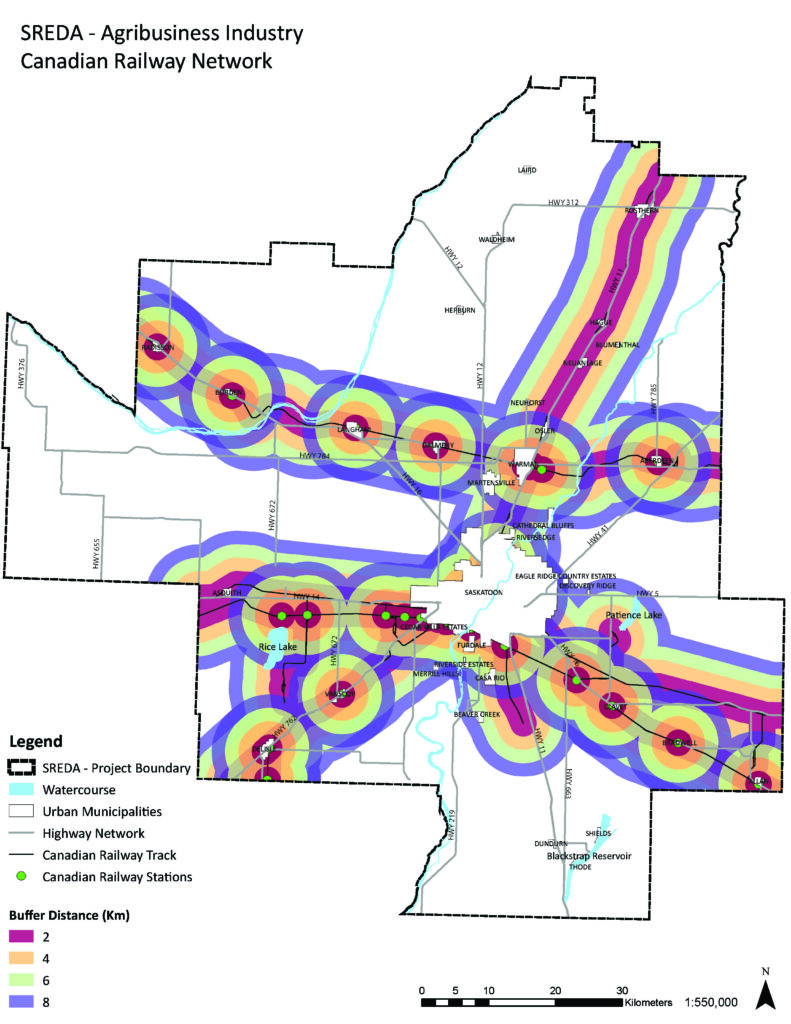
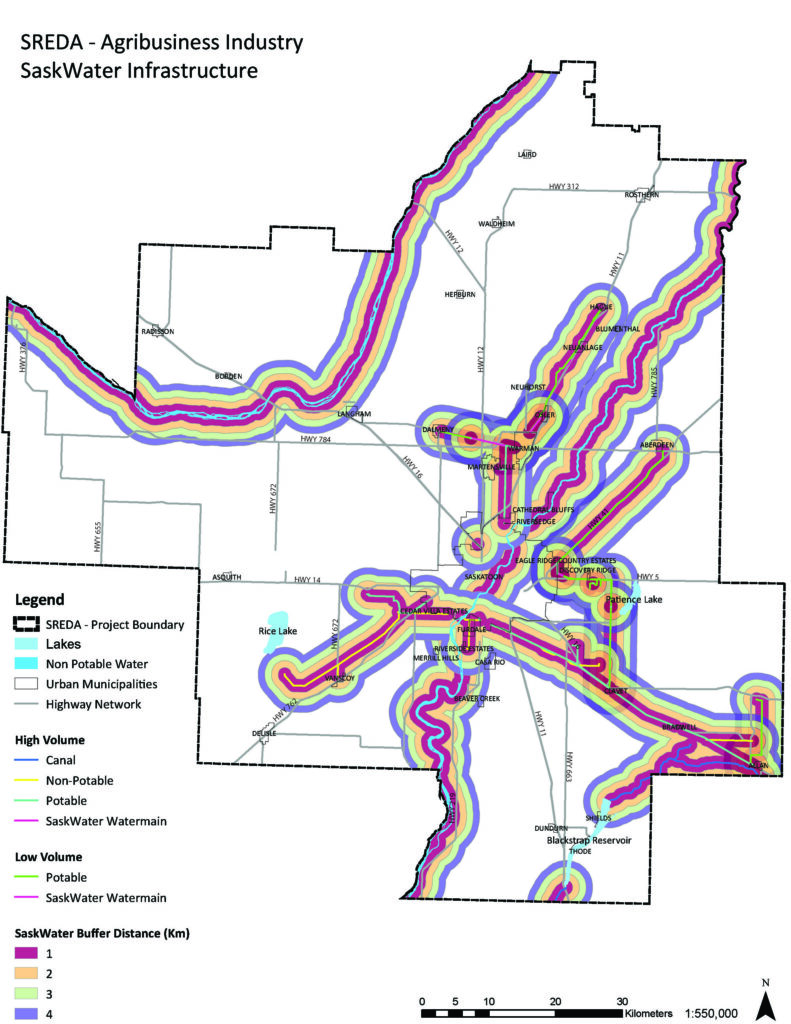
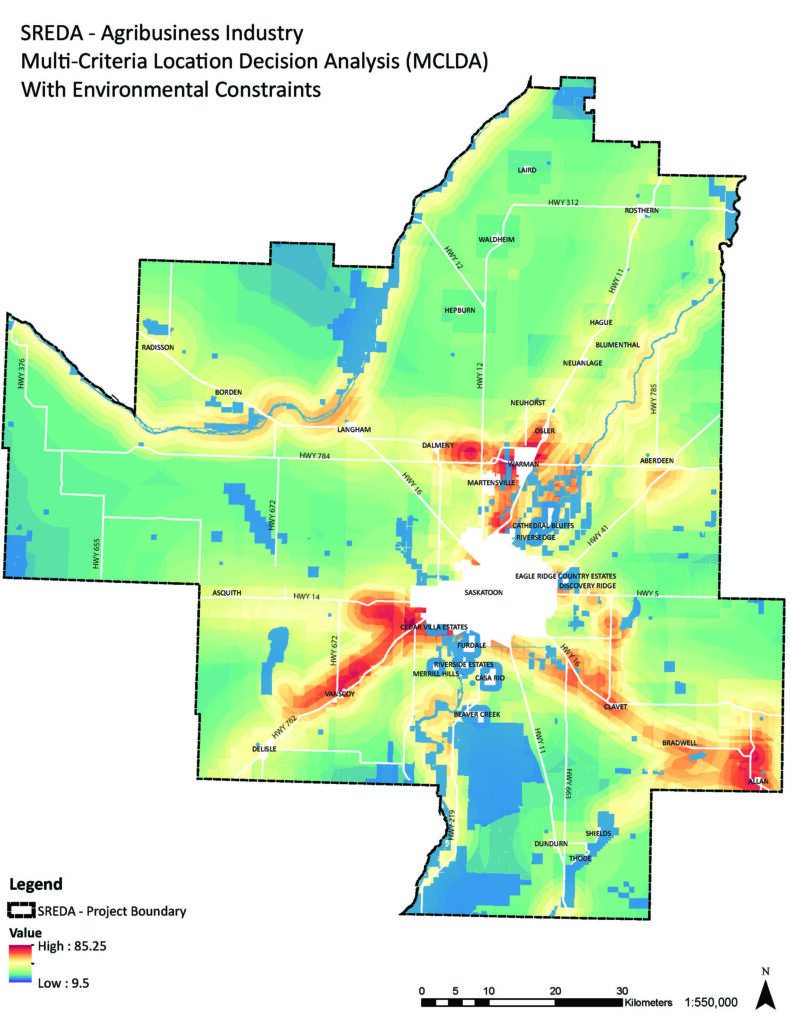
Owner
Saskatoon Regional Economic Development Authority
Market Sector
Local GovernmentPrimary Service Lines
PlanningRegion
EdmontonAdditional Info
Project Highlights:
- A Multi-Criteria Decision Analysis (MCDA) provides a logical and transparent process to make decisions that have multiple factors. It also enables different solutions to be considered, and ranked accordingly based on weighted factors. A Graphis Information System (GIS)-based MCDA utilizes spatial analysis to determine the best and maximum land use for a specific area. It couples the traditional MCDA process with GIS to enable informed decision making by combining geographic data and stakeholder/decision makers’ preferences to evaluate and prioritize criteria and create clear, data-driven direction to make decisions. Often, this is symbolized through a heat map, where lands that are least suitable for development are “cold” (blue) graduating to those that are most suitable as being “hot” (red). Ultimately, this provides a transparent, data-driven approach to identify which lands are most suitable for development. Other benefits include the ability to easily receive and incorporate stakeholder feedback, track and reproduce methodology in ArcMAP.
- We utilized GIS-MCDA to help the Saskatoon Regional Economic Development Authority (SREDA) develop its Saskatoon Region Agri-Business Attraction Study. SREDA had recognized the importance of the growing agri-food industry with the agri-business sector projected to contribute $10-to-$15 billion to Canada’s economy, and embarked on creating a strategy to make the region more competitive and attractive to agribusiness industries. The research and analysis carried out was critically important to identifying preferred locations within the Saskatoon Region to enable elevating their level of preparedness. The outcomes from the data driven analysis have enabled SREDA to identify and focus on specific land areas that align with agri-business needs.
- “SREDA feels very fortunate to have V3 Companies of Canada guiding our new Agri-business attraction strategy. V3 immediately took a leadership position, combining outstanding business and technical expertise to take our project from a mere concept towards a complete and world class business development strategy. V3’s expertise, local knowledge and broad team has been critical to the success this project is having, and I would highly recommend them for similar projects.”- ALEX FALLON, PRESIDENT & CEO, SASKATOON & REGION ECONOMIC DEVELOPMENT AUTHORITY
Related Projects

54th Avenue Resource Road Upgrade
This infrastructure project involved the widening of 2.2 km of roadway, extending 2150 meters of water main and 800 meters of sanitary sewer, and …
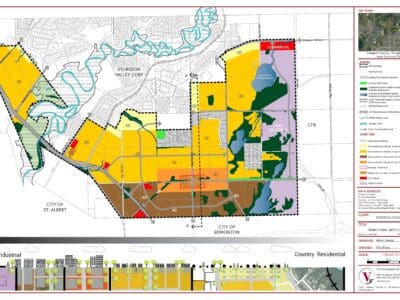
Sturgeon Valley ASP
The Edmonton Capital Region recently adopted a growth plan which directed Sturgeon County, its bordering municipalities, and the Canadian Forces Base …

Touch the Water – Clairmont Lake Urban Design
The County of Grande Point aimed to make Clairmont Lake the key feature of its new 20,000-resident community.
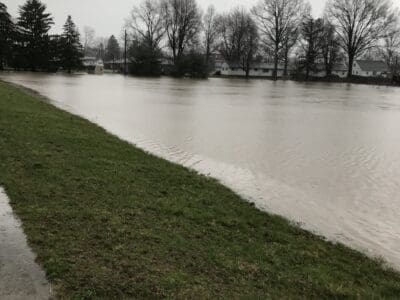
Hebron Hydrologic & Hydraulic Floodplain
The Village of Hebron partnered with our team to address heavy flood events frequently affecting their community.
